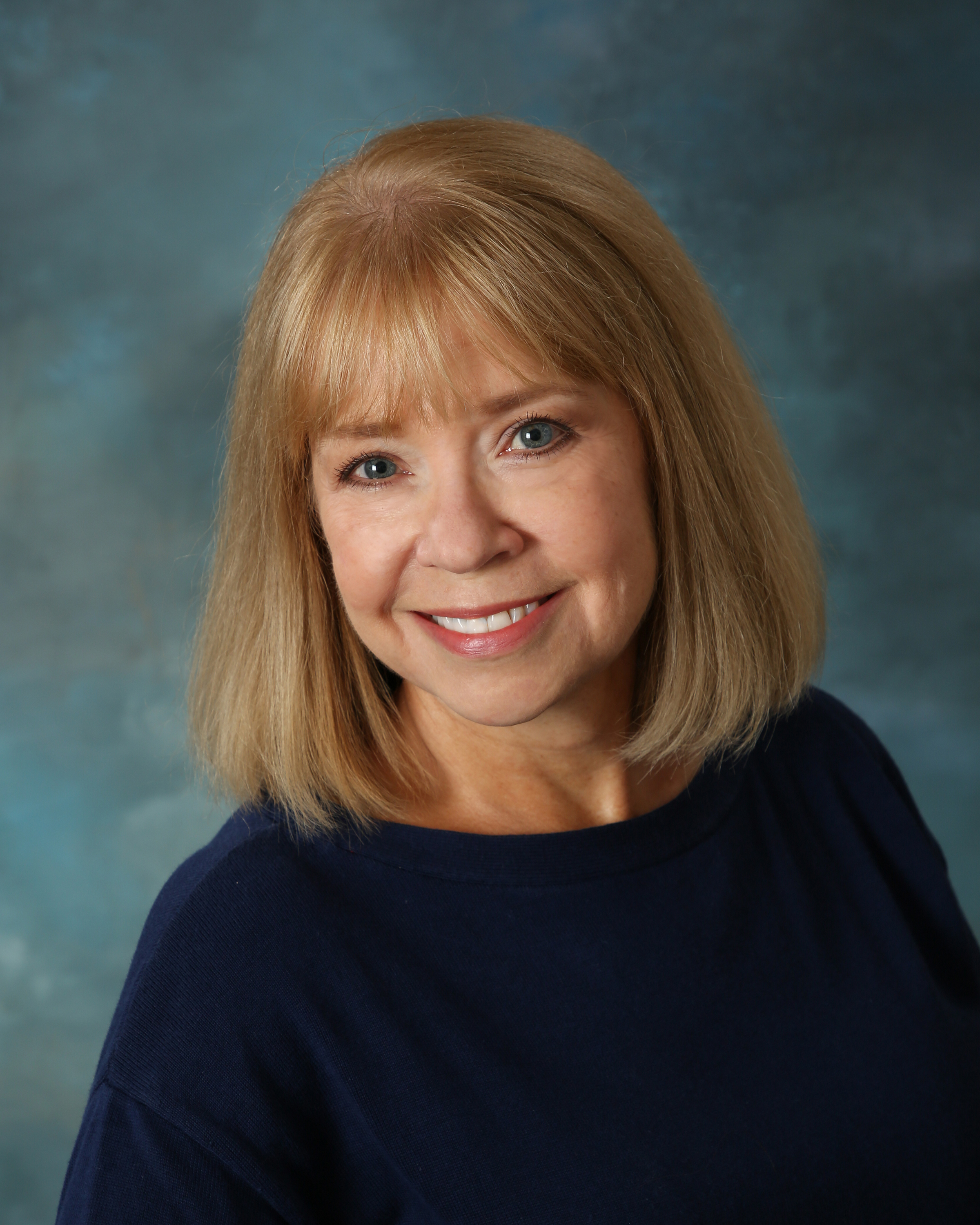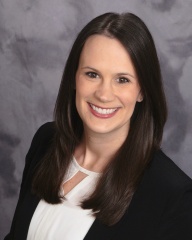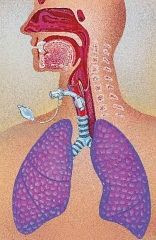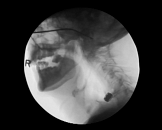Trach And Vent Patients: What The SLP Needs To Know About Communication And Swallowing #e173
Presenters: Roxann Diez Gross, PhD, CCC-SLP, ASHA Fellow & Lyndsi Yarkosky, BS, RRT-NPS
Learn SLP "must knows" related to patients on mechanical ventilation.
– K.B., prior course participant
Read more comments about this course!
Presented by a Speech-Language Pathologist and a Respiratory Therapist, this online course will examine factors that affect communication and swallowing performance for adult patients with tracheostomy tubes with and without mechanical ventilation. It begins with the basics for clinicians new to this patient population. For the more experienced clinician (explained in terms that all will understand) this course also addresses the current state of the science in management of the tracheostomy and ventilator-dependent patient.
The characteristics, advantages, and disadvantages of specific tracheostomy tubes and speaking valves will be covered to ensure best practice. Explanation of how "talking" tracheostomy tubes differ from standard tubes and speaking valves is included, as well as a discussion of common speaking valves and how they enable phonation. SLP "must knows" related to patients on mechanical ventilation will be covered including: explanation of common ventilator settings such as tidal volume, respiratory rate and PEEP; identifying common ventilator alarms; and how to apply an inline speaking valve with the ventilator. Also discussed will be issues related to secretion management and methods to re-establish airflow to the upper airway.
Course is offered for 0.4 ASHA CEUs – 4 Contact Hours.
Course Overview – Run Time: 4:00:30
- Tracheostomy Tube and Speaking Valve Basics and Selection Criteria (Roxann Diez Gross)
- Ventilator Basics (Lyndsi Yarkosky)
Stop and re-start the course at any point. Learners retain access to course content after completion for ongoing reference and review.
– J.B., prior course participant
Read more comments about this course!
The content of this online CE course does not focus exclusively on any specific proprietary product or service. Presenter financial and non-financial disclosures may be found in the Presenter & Disclosures area.
Video PowerPoint presentation with author narration & downloadable handout. Stop and re-start the course at any point. Learners retain access to course content after completion for ongoing reference and review.
Reviews
"Discussing how a trach works and how speaking valves work was best as I didn't learn enough about that in school. I liked the visualizations of each trach and arrows showing how air flows." A.G. (May 2025)
"Trachs and how capping the trach and using speaking valves are beneficial to the individual in a variety of ways. I work in outpatient and never see trach pts. I recently acquired one so immediately researched and came across this course which was immensely helpful. I feel confident in my ability to treat this pt successfully and reach out to other professionals caring for this pt if I have questions about trach care and swallow eval readiness - most likely MBS or FEES vs clinical." R.F. (Feb. 2025)
"Ventilation and tracheostomy are crucial topics, especially in my daily practice in a hospital. I also liked discussing ventilator management and settings, weaning from mechanical ventilation, tracheostomy care, airway management, patient comfort and communication, monitoring and troubleshooting. Clear and structured content, expert instructors, flexibility and self-pacing, resources availability, and focus on practical application." G.B. (Feb. 2025)
"The first section was beneficial, and all the information was relevant and useful. I liked the depth the course went into and level it was pitched at." E.C. (Feb. 2025)
"I learned a lot about the differences in trach tubes." E.K. (Dec. 2024)
"Detailed descriptions about different tracheostomy types and sizes, talking trachs, ventilator basics, problem-solving in-line placement. I liked that the course was self-paced. I could review/print the slides to use as reference, and I could rewind as needed." C.B. (Dec. 2024)
"I liked the case studies and information on speaking valves." E.B. (Dec. 2024)
"Specifics about attempts, results, and problem-solving were helpful. I liked the personal real life experiences." L.M. (Dec. 2024)
"Speaking valves were a helpful topic. I enjoyed the different RT SLP perspectives." M.M. (Nov. 2024)
"Everything was beneficial." H.S. (Oct. 2024)
"Ventilator settings were beneficial to discuss. I liked the course accessibility, good content." L.M. (Sep. 2024)
"The PMV information was beneficial. I liked the course format." B.P. (Aug. 2024)
"Lyndsi's whole presentation was fantastic. She explained the vent modes and settings so well. She encouraged critical thinking about the whole process and gave valuable information for troubleshooting issues. Her case study examples were useful to help future decisions on who would or wouldn't be a good candidate for speaking valve use. Roxann's information was useful as well- will be reviewing that in the future if my organization would be open to getting any kind of different trachs. I liked the respiratory therapist's presentation and case study examples." J.Z. (Jun. 2024)
"Appreciated that an RT presented and having info shared from her perspective. Back to basics yet very informative." R.Z. (Jun. 2024)
"The information about weaning and the information about speaking valves was beneficial." J.M. (Apr. 2024)
"Everything was beneficial! I enjoyed the knowledge of the presenters." G.D. (Mar. 2024)
"Tips on Trach care. I especially liked the video and case study in 2nd portion of the course." D.H. (Mar. 2024)
"The possible impact on overinflating the cuff was helpful to discuss. This information can be used to educate and optimize the collaboration with RT. I liked the talking trach information. I liked that all the visuals demonstrate the theory. The case studies in the second part and that information was really clear." R.L. (Mar. 2024)
"Learning the different vent settings for in-line speaking valves was beneficial. I enjoyed the breakdown between trachs and vents." E.A. (Mar. 2024)
"The steps for the placement of a PMV were helpful. I liked the concrete examples." C.J. (Mar. 2024)
"Types of trach tubes and purposes of the cuff, etc. I liked the use of images and diagrams to aid explanations." G.H. (Feb. 2024)
"Everything was explained very well. Good examples/metaphors. The additional ventilator information was very helpful. Not always included in trach training." L.P. (Jan. 2024)
"All of this course was beneficial." E.C. (Dec. 2023)
"Informative course. Discussing ventilator-dependent patients was helpful." H.A. (Dec. 2023)
"Learned specific differences of different trach types." C.C. (Dec. 2023)
"I liked the review of trach parts and different modes of the vent. The presenters were very thorough with their material, and examples are always helpful in relating the info to daily practices." C.H. (Dec. 2023)
"All of this information provided will be extremely beneficial to me in my daily practice. Both presenters were easy to listen to and comprehend. I very much appreciated the photos of the vent screens and the videos." V.O. (Nov. 2023)
"Learning about problem-solving with the different trachs was beneficial. The case examples were helpful." S.H. (Nov. 2023)
"The presenters explained the content very well! The discussion of in-line speaking valves was helpful." E.B. (Nov. 2023)
"Learning what speech pathology can do for patients while on the ventilator. And learning about all the different types of speaking valves and trach tubes." K.A. (Nov. 2023)
"All was excellent. I found the information on the speaking valves/suctioning and the explanation of vents very helpful. Excellent coverage of the material by experts. Organized and clear." K.H. (Oct. 2023)
"Everything was helpful. I thought both presentations (RT and SLP) continuously complemented each other. Great idea." M.J. (Oct. 2023)
"Easy to follow course. I learned more about trachs with patients who have them in the home setting." A.S. (Oct. 2023)
"I liked the content related to uncuffed tracheostomy tubes and Passy Muir valves. The Passy Muir valve placement/trials were beneficial." A.M. (Oct. 2023)
"Informative course. Use of the valve in line with the vent and definitions of various respiratory terms were helpful." E.N. (Sep. 2023)
"The discussion about trach selection criteria and pros and cons of different trachs was beneficial. I liked the use of photos in first session." A.R. (Sep. 2023)
"Speaker was engaging. Types of trachs, talking trachs, review of respiratory system and need for trachs." A.B. (Aug. 2023)
"Comprehensive course. I liked the troubleshooting and ways to explain things to patients. Techniques were beneficial." S.P. (Jul. 2023)
"Discussing ways to connect the inline valve was beneficial. This always gives me pause!" O.P. (Jul. 2023)
"I liked the collaboration between SLP and RT. Topic of speaking valves and the criteria to start trials/levels was beneficial." D.P. (Jul. 2023)
"Learning the various trach tubes available, method of cuff deflation, and vent settings and what they mean was beneficial. I liked the convenience of online access." A.S. (Jul. 2023)
"It was beneficial to discuss the different types of vent settings and when appropriate to use these for a specific pt population." K.F. (Jun. 2023)
"I liked the simple descriptions of vent settings, and viewing the vent screen with settings and having the RT explain what each number and abbreviation means." L.L. (May 2023)
"Understanding the basics of tracheostomy and how to help patients. I liked the knowledge of the presenters and how they explained things." L.S. (May 2023)
"I liked the description of various vent settings and what they are used for, specifically what an SLP should know. I liked the video of real patient vent settings." A.M. (May 2023)
"The review of trachs and ventilators was beneficial." E.S. (May 2023)
"Very good graphics, and I liked the pictures." K.F. (Apr. 2023)
"Discussion on speaking valves was beneficial." L.C. (Mar. 2023)
"I liked the background knowledge about trachs and my role as an SLP. Learning impact to speaking and risk factors. Quality images, diagrams and examples." S.V. (Feb. 2023)
"Learning the different types of valves and tubes, and when to use them. I liked the tips surrounding what usually occurs in medical settings and what's actually true." S.R. (Jan. 2023)
"Very logical to follow. I liked all of it." H.M. (Jan. 2023)
"Learning ventilation and settings was beneficial. I liked the case studies that the presenters included." C.G. (Dec. 2022)
"I liked all of it. The amount of detail was appreciated." K.P. (Dec. 2022)
"I liked that the presenters shared relevant clinical experiences. The section on tracheostomy was particularly helpful to know what are the various options out there, and what may be the situations in which I consider the use of each type." M.C. (Dec. 2022)
"The ventilator information and review of all types of tracheostomy tubes was very helpful." A.F. (Nov. 2022)
"Excellent information that can be used in my work setting. Considerations and procedures for placing an inline speaking valve were beneficial." C.J. (Nov. 2022)
"Simple explanation and terms of vent settings for SLPs." V.B. (Oct. 2022)
"All aspects and content are beneficial for my daily practice." A.M. (Oct. 2022)
"The session was organized and easy to follow." J.D. (Oct. 2022)
"This course was thorough." M.W. (Oct. 2022)
"Nice refresher on in-line valve use." M.W. (Oct. 2022)
"Speakers were dynamic. The ventilator modes were very helpful for me to learn." D.Z. (Oct. 2022)
"The topic of different types of trach tubes and speaking valves with considerations/reasons for each was good." K.Y. (Oct. 2022)
"The vent settings were super helpful." L.H. (Sept. 2022)
"I liked the collaboration between RT and SLP, and the case study." M.C. (Aug. 2022)
"I am a very visual person - liked all the pictures and the images." L.M. (July 2022)
"I like the ease of stopping and starting the course. I liked the trach education and learning ventilator settings." E.P. (June 2022)
"The course is very comprehensive." Good review of ventilator settings and practice. Good review of tracheostomy tube types/brands." C.B. (June 2022)
"Review of vent settings and when to try a speaking valve was beneficial. I liked the content shared by 2 disciplines, giving multiple perspectives on the same course material." L.S. (June 2022)
"I like the convenience, ability to listen to certain sections more than once and learning new information, especially in line speaking valves with vents." C.R. (June 2022)
"Learning types of trach tubes, how they work, terminology, normal values, safe practice, checklists to follow - my overall knowledge of trach and vent increased." L.H. (June 2022)
"Clear, easy to understand presentation." D.S. (June 2022)
"I liked that there was a RT presenter, and the overview of trach parts and function." A.W. (Apr. 2022)
"I liked the review of different trachs and characteristics of each – placing PMV in-line with the vent." K.W. (Apr. 2022)
"I learned that there are many options for types of trachs that could benefit patient outcomes for speech/swallowing. I liked the thoroughness of the presenters regarding different trachs and rationale behind the design/use. I had never heard of the flex trach cloud as a stoma leakage solution." J.O. (Apr. 2022)
"Pros and Cons of the various types of speaking valves, in addition to the Modes of Ventilation. Course was easy to follow and relevant information about current products available." A.D. (Mar. 2022)
"I liked the review of airway anatomy and benefits of speaking valves." A.D. (Mar. 2022)
"I liked learning about various types of trachs available, and the ease of the presentation." R.B. (Feb. 2022)
"Videos and case examples were beneficial." B.C. (Jan. 2022)
"All of the background information on trach tubes will help me in assessing and troubleshooting any patients I may see with trachs. I feel that I have a better understanding of the purpose of trach tubes and I feel more confident in assessing these patients in MBS study." R.K. (Jan. 2022)
"The information regarding mechanical ventilation was not new to me, but was a helpful refresher. I like the depth of information about tracheostomy tubes that was provided." C.B. (Jan. 2022)
"RT perspective to SLP assistance with understanding vent setting and benefits to placing PMV were informative. I liked the SLP and RT perspectives when it comes to trachs and one-way speaking valve placements. I also enjoyed learning about the different products for trachs and speaking valves and their respective benefits." J.C. (Jan. 2022)
Course Objectives
- Describe the different parts of tracheostomy tubes.
- Describe the differences between common tracheostomy tubes.
- Describe how talking tracheostomy tubes differ from standard tubes and speaking valves.
- Identify common speaking valves and describe how they enable phonation.
- List reasons for requesting specific tracheostomy tubes and/or speaking valves for patients.
- Describe the normal breathing process.
- Identify indications for mechanical ventilation.
- Describe common ventilator settings such as Tidal Volume, Respiratory Rate and PEEP.
- Summarize common modes of ventilation.
- Identify common ventilator alarms.
- Describe how to apply an inline speaking valve with the ventilator.
Presenter & Disclosures

Roxann Diez Gross, PhD, CCC-SLP, ASHA Fellow, is a leading expert, accomplished researcher, and frequently invited national and international lecturer. Her areas of expertise include swallowing function, esophageal dysphagia, and management of patients with tracheostomy tubes and speaking valves.
Currently, Dr. Gross is a consultant and clinical specialist for Swallowing Diagnostics, Inc., Parkland, FL. She was the Director of Research at The Children's Institute in Pittsburgh, PA., and prior to this position, she was Director of the Swallowing Disorders Center at the University of Pittsburgh Medical Center and Assistant Professor of Otolaryngology in the School of Medicine.
Dr. Gross has published several scientific papers and clinical book chapters. Most recently, she was the primary editor of a case study textbook that focuses on tracheostomy and ventilator dependence in adults and children. Her primary area of research examines interactions between breathing and swallowing in neurologic and respiratory disease. Over the past 10 years, she has expanded her clinical work and research to include non-pathologic forms of esophageal dysphagia.
Speaker Disclosures:
Financial — Roxann Diez Gross is presenter of online CE courses by Northern Speech Services; receives royalties.
Nonfinancial — Roxann Diez Gross has no relevant nonfinancial relationships to disclose.

Lyndsi E. Yarkosky, BS, RRT-NPS, is a registered respiratory therapist who serves as the Clinical Leader of the Respiratory Care Department at The Children's Institute of Pittsburgh. She also provides multidisciplinary staff education as well as education to families in the areas of ventilator management, tracheostomy care, suctioning and handling emergency situations in the home. She has a wide variety of experience including neonatal intensive care, adult critical care, and in-patient pediatric rehabilitation. In addition to her clinical and leadership duties, Lyndsi also serves as an independent consultant for Passy Muir, Inc.
Speaker Disclosures:
Financial — Lyndsi Yarkosky is a presenter of online CE courses sponsored by Northern Speech Services; receives royalties.
Financial — Lyndsi Yarkosky provides consulting services for Passy Muir Corporation; receives consulting fees.
Nonfinancial — Lyndsi Yarkosky has no relevant nonfinancial relationships to disclose.
Intended Audience / Accreditation

This program is offered for 0.4 ASHA CEUs (Intermediate Level; Professional Area).

Intended Audience
- Speech-Language Pathologists
ASHA CEUs:
Northern Speech online courses are registered with ASHA and are offered for ASHA CEUs. The number of ASHA CEUs is noted above. Note that 0.1 ASHA CEU = 1 contact hour = equals 1 CEE.
Earning ASHA CEUs and the ASHA CE Registry:
To earn CEUs from this course and have ASHA CEUs submitted to the ASHA CE Registry, course participants must satisfy each of these requirements:
- Participants must meet the eligibility requirements to earn ASHA CEUs (see below).
- Participants must indicate – prior to course completion – their intent for Northern Speech to submit this course to ASHA.
- Participants must complete/view this course in its entirety.
- Participants must complete the course post test with a minimum of 80% accuracy.
- After successful completion of the post test and completion of the course evaluation, a certificate of course completion is presented to the participant electronically via PDF.
- For those participants who indicated their intent for the ASHA CE Registry, course completion status will be submitted by Northern Speech to ASHA within 45 days of the course completion date.
Eligibility To Earn ASHA CEUs:
Attendees must meet at least one of the following conditions in order to be eligible to earn ASHA CEUs:
- Current ASHA Member.
- ASHA Certificate of Clinical Competence (CCC) Holder.
- Licensed by a state or provincial regulatory agency to practice speech-language pathology (SLP) or audiology.
- Credentialed by a state regulatory agency to practice SLP or audiology.
- Credentialed by a national regulatory agency to practice SLP or audiology.
- Engaged in a Clinical Fellowship under the supervision of an individual with their ASHA CCC.
- Currently enrolled in a master's or doctoral program in SLP or audiology.
If an attendee is not an ASHA member or CCC holder but meets any of the above criteria, they may inform the ASHA CE Registry of their eligibility by visiting this site.
ASHA CE Registry:
During the enrollment process, if you select to receive ASHA credit for this course and if you provide your ASHA number, Northern Speech will automatically submit your CEU information to the ASHA CE Registry after successful course completion (80% on post test). This submission happens once per month, during the first week of the month. For example, if you complete your course on November 7th, Northern Speech will submit all November online course CEUs to ASHA during the first week of December. When ASHA inputs the information into their database, they will mark the course as completed on the last day of the month in which it was completed, so November 30th using this example. The certificate of completion available for you to print immediately, however, will reflect the actual completion date, November 7th in this example. Due to ASHA processing procedures please allow 2-3 weeks, from the submission date, for the course to appear on your ASHA transcript.
Licensing Boards: Most state licensing boards DO accept CEUs earned online (usually classified as home-study credits). Some state boards do, however, place a limit to the number of credits that can be earned via home study/online courses. For the most current information, we suggest that you contact your licensing board or agency to verify acceptance policies and/or any credit limits related to home-study courses prior to registering for this course.
Additional accrediting agencies by which Northern Speech is an approved CE provider:
- California: NSS is approved as a provider of continuing education by the California Speech-Language Pathology & Audiology Board. Provider #PDP4. Online CEU limits may apply; please contact SLPAHADB for current online CEU acceptance policies.
- Iowa: NSS is approved as a provider of continuing education by the Iowa Board of Speech Pathology and Audiology Examiners. Provider #169.
- Kansas: NSS is approved as a provider of continuing education by the Kansas Department of Health and Environment. Provider #LTS-S0005.
Frequently Asked Questions
Customer Support: Please phone 888.337.3866 or email info@northernspeech.com.
Course Completion Timeframe:
You have unlimited time to complete our online courses. You may log off and log on as often as you’d like to in order to complete all sections of a course.
However, completion dates are based on Eastern Standard Time. Therefore, if you need your CEUs by a certain date, be sure to complete the course test before 11:59pm EST on that date. For example, if you need CEUs before January 1st, you will need to complete the course test before 11:59pm EST on December 31st.
Content Access:
Access to course materials and content does not expire, even after completing the post test. You may continue to review course material by logging into your NSS account, clicking the My Online Courses tab, and then viewing your desired course.
Certificate of Completion:
On successful completion of the post test (80%), a certificate will be immediately available for download and/or printing. This certificate will include your name, date of completion (based on Eastern Time Zone, USA/Canada), and number of contact hours (CEUs / CEEs). Please note that CEUs are awarded on the date of successful test completion, not the date of course enrollment. Please ensure that you successfully complete the post test prior to any licensure renewal dates.
ASHA CE Registry Submission:
During the enrollment process, if you select to receive ASHA credit for this course and if you provide your ASHA number, NSS will automatically submit your CEU information to the ASHA CE Registry after successful course completion (80% on post test). This submission happens once per month, during the first week of the month. For example, if you complete your course on November 7th, NSS will submit all November online course CEUs to ASHA during the first week of December. When ASHA inputs the information into their database, they will mark the course as completed on the last day of the month in which it was completed, so November 30th using this example. The certificate of completion available for you to print immediately, however, will reflect the actual completion date, November 7th in this example. Due to ASHA processing procedures please allow 2-3 weeks, from the submission date, for the course to appear on your ASHA transcript.
Purchase Orders:
Purchase orders are currently not accepted for online orders, if you wish to submit a purchase order please do so at info@northernspeech.com or fax to 888-696-9655.
What is an Online Course?
Our Online Courses consist of video, audio, and/or text content and are offered for ASHA CEUs. Unlike a webinar, which requires participants to be logged on and at a computer at specific times, our Online Courses are available to you at any time, from any device, via your NorthernSpeech.com online account. You may work at your own pace and start and stop your course as you wish. Your course will conclude with a short post test. On successful completion of the post test (>80%), a printable certificate of completion is presented to you.
Receiving CEUs:
Northern Speech is an ASHA CE Provider and our online courses are registered with ASHA and offered for ASHA CEUs. Please note that successful completion of the online post test is required prior to the awarding of CEUs. Please contact your state licensing board for acceptance policies related to CEUs earned online. Please note that courses offered for university students are not applicable for CEUs.
Registering for an online course:
You may browse all online courses by clicking the Continuing Education tab above, then Online Courses. Once you find a course, click Enroll Now, and you will be asked to either log into your existing Northern Speech account or create a new online account. Once you’ve entered your account information and provided your credit card payment, your course will be immediately available to you.
Accessing your purchased course or returning to a purchased course:
You will be able to access your online course by logging into your Northern Speech account and then clicking the My Online Courses tab on your profile screen. Click the course you would like to start or to resume. From there, proceed through the course sections until you are ready to complete the post test. You do not have to complete your course all at once. You may log on and off as you wish.
Testing requirements:
Each online course concludes with a post test consisting of multiple choice or true & false questions. Scores of 80% or greater are required for successful course completion and awarding of CEUs. You may revisit course materials and retest as needed to achieve a passing score.
Number of CEUs offered:
We offer courses from 1 to 21 contact hours. Each course will note the number of CEUs offered. Please note that 0.1 CEU = 1 contact hour = 1 CEE.
State licensing boards and online CEUs:
NSS is an ASHA CE Provider and most state licensing boards DO accept ASHA CEUs earned online (usually classified as home-study credits). Some boards do, however, place a limit to the number of CEUs that can be earned via home study/online courses. For the most current information, we suggest that you contact your licensing board or agency to verify acceptance policies and/or any CEU limits related to home-study courses prior to enrolling in an online course.
Course formats:
Our course formats include: text, audio, video, and PowerPoint with author narration. Each course will note the format on the course description page. Most courses include closed captioning.
Course handouts:
Most of our online courses provide a link to download the accompanying handout as a PDF file.
Group discounts:
Groups of 3 or more are eligible for a 20% discount on each registration on most of our online courses. To receive this discount, registrations need to be processed together via the "Group Rates" tab on the Online Course of your choice.
Computer requirements:
For our online courses to function best, we recommend that you update your computer to include the newest version of your Internet browser (Safari, Chrome, Firefox, Edge, Internet Explorer, etc.) and newest version of your computer's operating system. Also a high-speed Internet connection is recommended (cable or DSL). Speakers or headphones will be required for many of our courses as many contain audio components.
Course Cancellation Policy:
A purchased online course can be exchanged, refunded, or transferred to another individual if contact is made with NSS (via phone or email) within 30 days of purchase and the course materials have not been viewed or downloaded.
Special Needs:
Please click here for any special needs requests, and we will do our best to accommodate them.
| Contact Us |






